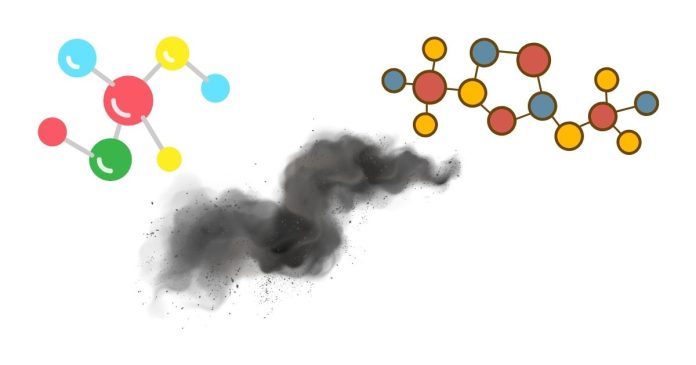When we think of smoke, we often picture the billowing clouds rising from a campfire or the faint haze drifting up from a cigarette. But is smoke a chemical compound? The short answer is no—smoke is not a single chemical compound. Instead, it is a complex mixture of gases and tiny solid particles. Let’s break it down to better understand what smoke is made of and why it doesn’t qualify as a chemical compound.
What is Smoke?
At its core, smoke is the result of incomplete combustion (burning). Combustion is a chemical reaction that occurs when a material reacts with oxygen, producing heat and light. However, incomplete combustion doesn’t burn all of the fuel efficiently, which results in the production of smoke.
When materials like wood, paper, or tobacco burn, they release a wide range of substances, including gases and tiny particulate matter. These particles can vary in size and composition depending on the material being burned, as well as the temperature and conditions under which the burning occurs.
Components of Smoke
Smoke contains both visible particles (solid matter) and invisible gases. These components can be broadly categorized as follows:
- Solid Particles (Soot):
- Soot is composed of fine, carbon-rich particles that are small enough to be suspended in the air. These particles are what give smoke its characteristic dark appearance and contribute to the health hazards of inhaling smoke.
- Gaseous Compounds:
- Smoke also contains a variety of gases, many of which can be toxic. Some common gases found in smoke include:
- Carbon dioxide (CO₂): A colorless, odorless gas that is a byproduct of combustion.
- Carbon monoxide (CO): A colorless, odorless, and highly toxic gas.
- Water vapor (H₂O): Produced as a result of the combustion of organic materials, which contain hydrogen.
- Methane (CH₄): A flammable gas that can be released during incomplete combustion.
- Volatile organic compounds (VOCs): A wide range of chemicals, some of which can be hazardous to health, are also present in smoke.
- Nitrogen oxides (NOx): These are gases that can irritate the respiratory system and contribute to air pollution.
- Smoke also contains a variety of gases, many of which can be toxic. Some common gases found in smoke include:
- Tar:
- Tar is a sticky, viscous substance made up of various chemicals that can accumulate when materials like tobacco or wood burn. Tar contains a wide range of harmful compounds, including carcinogens.
Why Smoke Isn’t a Chemical Compound
A chemical compound is a substance made up of two or more different types of atoms chemically bonded together in a specific ratio and structure. Common examples of chemical compounds include water (H₂O), carbon dioxide (CO₂), and methane (CH₄).
Smoke, however, is not a single substance. It is a mixture of multiple gases, liquids, and solid particles that are not chemically bonded in a fixed ratio. Since smoke consists of different substances rather than a single compound, it does not meet the definition of a chemical compound.
The Complexity of Smoke Composition
The exact composition of smoke varies widely depending on the material being burned. For example:
- Wood Smoke: Burning wood produces smoke rich in carbon dioxide, carbon monoxide, water vapor, and particulate matter. It may also release various organic compounds, including some that can be harmful, like acrolein and formaldehyde.
- Tobacco Smoke: Cigarette smoke contains not only the typical combustion byproducts but also a wide array of chemicals that are unique to tobacco, including nicotine, tar, ammonia, and hydrogen cyanide.
- Vegetable Smoke: When vegetables or plant-based materials burn, they also release smoke containing different organic compounds, which may have distinct smells and chemical compositions.
Health and Environmental Impacts
While smoke is not a chemical compound, the mixture of gases and particles it contains can have significant health and environmental effects. For instance:
- Health Effects: Inhaling smoke, especially from sources like tobacco, forest fires, or industrial processes, can lead to respiratory problems, cardiovascular diseases, and even cancer. The toxic gases and particulate matter in smoke can irritate the lungs and exacerbate conditions like asthma.
- Environmental Impact: Smoke also contributes to air pollution. The particulate matter in smoke can reduce air quality, while certain gases (like carbon dioxide and methane) contribute to climate change by acting as greenhouse gases.
In summary, smoke is not a single chemical compound but rather a mixture of various gases, liquids, and solid particles produced by incomplete combustion. It is a complex and variable substance, with its exact composition dependent on the material being burned. While smoke isn’t a chemical compound, it is important to recognize the potential health and environmental risks associated with exposure to it. Understanding its components can help in managing those risks and reducing its impact.


